Last Updated on September 3, 2023 by a Friendly Gardener
Help! My Alocasia is drooping! Alocasia plants are admired for their beautiful foliage, but they can be fussy when it comes to care and environmental conditions. Drooping leaves is quite common among Alocasia care problems and can be due to a variety of causes. The causes are easily adjusted and if your alocasia has not yet experienced droopy foliage, it can be prevented with a little attention to care methods.
Why Is My Alocasia Drooping?
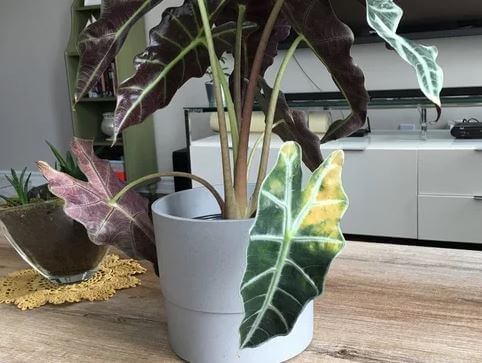
Alocasia are plants that require more care than many other popular houseplants. When an alocasia droops, the plant is signaling a problem. This requires careful examination of your plant for successful identification of whatever issue your plant is dealing with.
Overwatering
A common mistake when evaluating the cause of a droopy alocasia is to assume the plant is thirsty. Overwatering as a cause is actually much more frequent than one would believe. Both underwatering and overwatering lead to your alocasia not receiving the water it needs. Overwatering however is much more serious and problematic than underwatering. Anything that causes your plant’s soil bed to remain soggy and waterlogged. Overly wet soil impedes root aeration and oxygen from arriving at the roots. The plant gradually suffocates and will die if left untreated. This also renders the plant susceptible to infection and disease.
When examining your plant to determine the cause of alocasia drooping, look for soggy soil, yellowing foliage beginning at the bottom of the plant, and leaf edema which manifests with watery blisters on foliage. A foul smell is characteristic of root rot and wet brownish spots on leaves often signal bacterial leaf spot infections. These symptoms together with drooping indicate the cause is overwatering.
If overwatering is the cause, it may not be due to your watering schedule. You may have a drainage problem. If your plant is in a pot without drainage holes or with too few, this can lead to soggy soil. Poorly draining soil blends can also lead to too much water retention as can overpotting. When your plant is in a pot that is too large, excess soil will retain more water than necessary. Pots should only be one to two inches larger than the plant’s root system.
Improper lighting can also contribute to soil remaining too wet for too long as can the season of the year. Alocasias will enter a period of rest or dormancy in winter, so watering should be reduced significantly.
Underwatering
As alocasia do not fare well with too much water, they also do not fare well with too little. To identify if your plant is drooping due to a lack of water, examine your plant for a dried-out soil bed especially if this happens almost immediately after you have watered. Alocasia drooping stems and brown, crispy leaf tips and edges can imply chronically insufficient water.
Contrary to bacterial leaf spot disease, brown patches will feel dry. Plants may also be rootbound or in a container that is too small causing soil to dry out faster. Alocasia plants can also suffer from excessive light or heat as well as a lack of humidity.
To ascertain how often your plant needs to be watered, examine your plant every few days. When the top of the soil feels dry to approximately a half inch deep, you can water. This watering schedule should be reduced further in winter.
Lack of Humidity
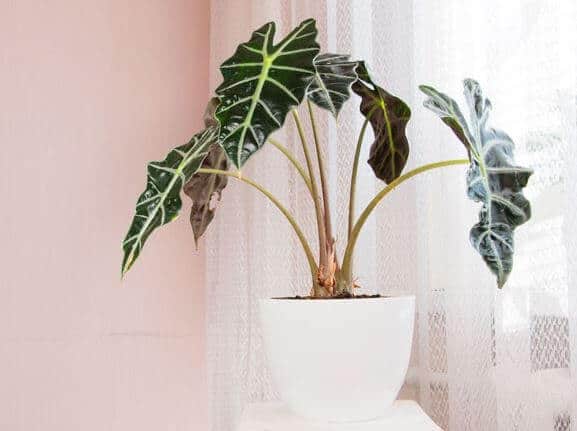
Alocasias are tropical plants that live in natural habitats with high humidity levels. This can be challenging for indoor cultivation. While some houseplants can tolerate drier indoor air, the alocasia cannot. If indoor humidity drops below levels of 40%, your plant will suffer. Low humidity often accompanies problems related to underwatering. Brown leaf edges and tips, and leaf curling can all be symptomatic of low humidity.
Low humidity causes the drying out of foliage much more rapidly than of the entire plant. This means the plant may appear well but have some isolated foliage that is suffering. It will concentrate effects on foliage edges that are located the furthest from the root system. If you notice isolated leaf curling or dying, you may have a humidity problem. Hygrometers can indicate whether your alocasia has sufficient indoor humidity.
To improve humidity levels, you can move your alocasia to a bathroom or kitchen that has naturally higher humidity levels. You can also use a small space humidifier or a pebble water tray placed beneath the plant’s container. Placing your alocasia in a group of houseplants will also contribute to creating a microclimate with higher humidity.
Insufficient Light
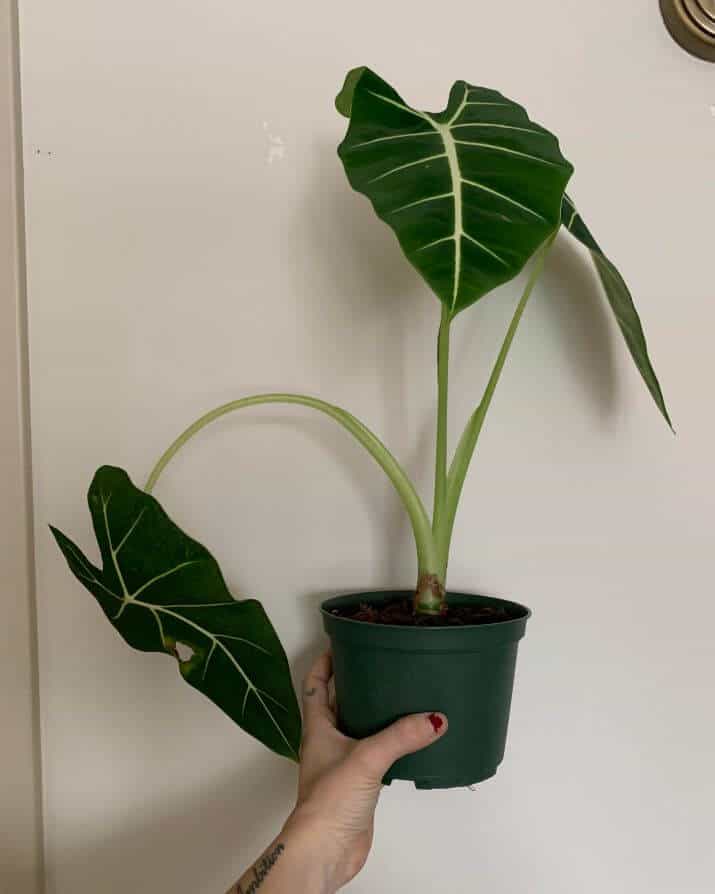
Improper light will negatively affect any houseplant. Alocasias need generous bright but rigorously indirect bright light. Insufficient light will slow growth and increase the risk of overwatering. Alocasias placed too far from a light source are at risk of receiving too little light. Also, remember that a window that offers sufficient light in one season may work in another.
Environmental Temperatures
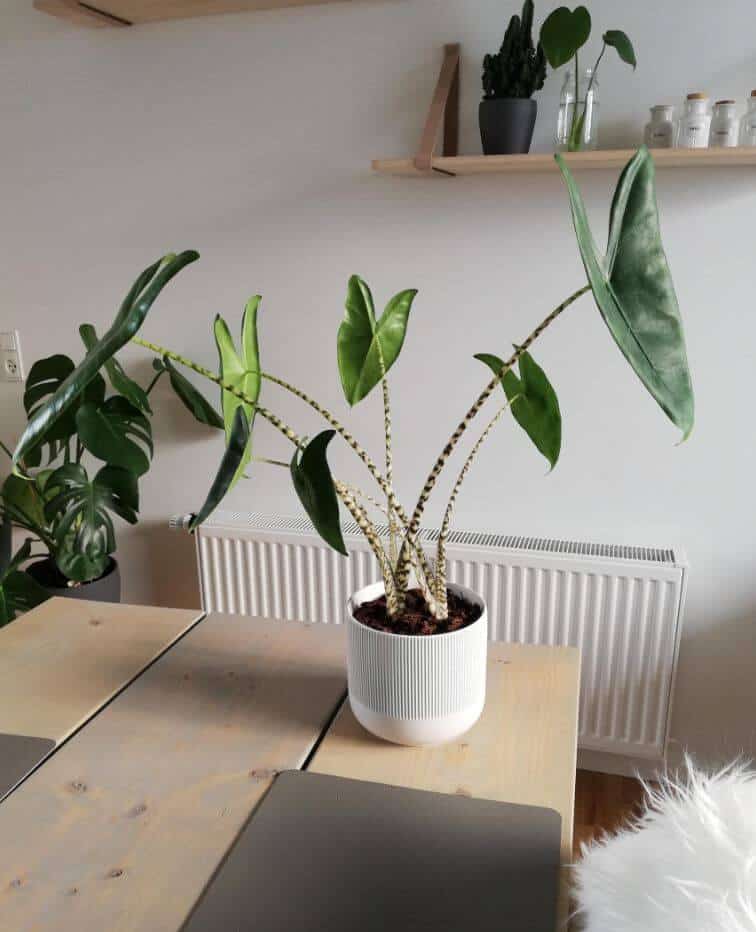
Alocasias prefer environmental temperatures in the range of 60° to 85°F. They are highly sensitive to drafts whether hot or cold and are the cause of repeated and continuous stress which can cause drooping. Hence, alocasia plants should never be positioned near drafty windows or air conditioning or heating units and vents.
Pest Infestations
Like many houseplants, the Alocasia is susceptible to a variety of sap-sucking insects. Common pests include aphids, thrips, scale insects, mealybugs, and spider mites. Any of these can attack your plant and cause foliage to droop. Your alocasia should be examined regularly for signs of pest infestation. Check foliage underneath and topside as well as stems for signs.
You may note evidence such as webbing, cottony deposits, or waxy dark spots to name a few. Drooping generally occurs in the case of a severe infestation. Use a horticultural oil such as neem oil or insecticidal soap to rid your plant of pests. Treatment may need to be repeated several times until all pests are eradicated. Also, isolate your plant from other houseplants to prevent spreading.
Dormancy
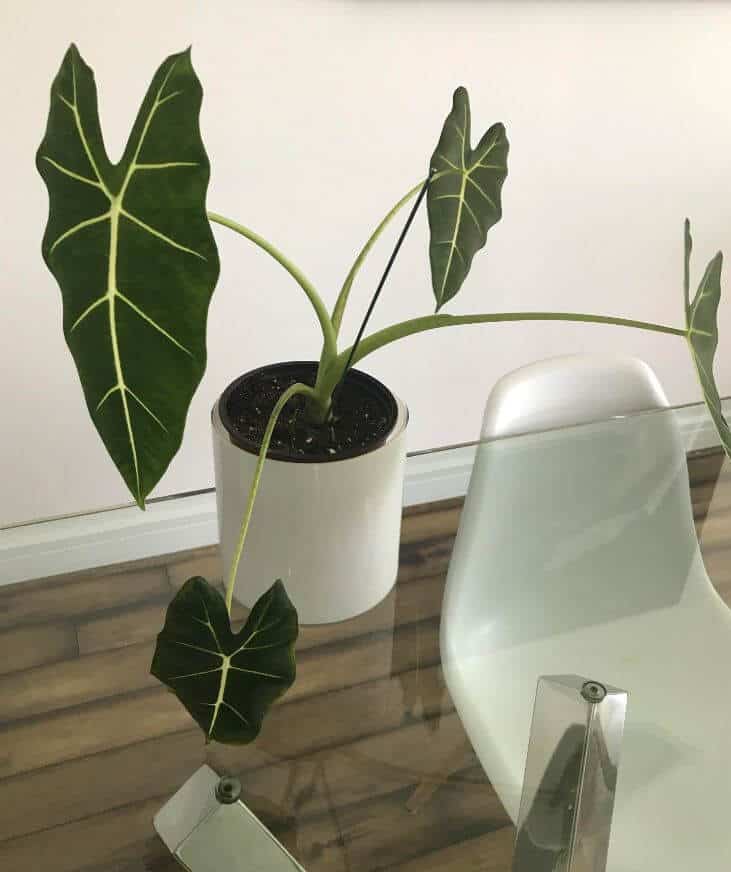
Alocasia leaves drooping during dormancy is normal. Dormancy can be stimulated by insufficient light or improper temperatures. Leaves may droop and die. New growth will follow when dormancy ends. Alocasia grown indoors may never enter dormancy if light and temperature are maintained constant.
If your plant enters dormancy, reduce watering allowing the soil bed to dry out several inches deep. Light and temperatures should be moderate and constant until new growth appears. Dormancy can last several weeks or even as long as six months, so patience is necessary.

